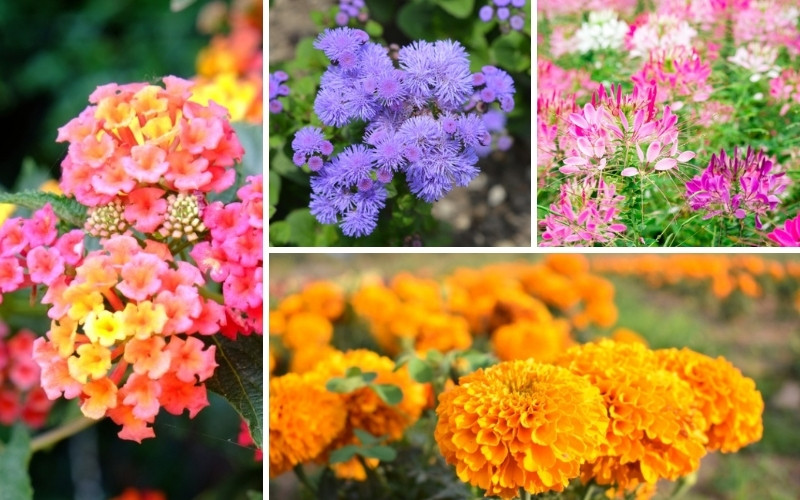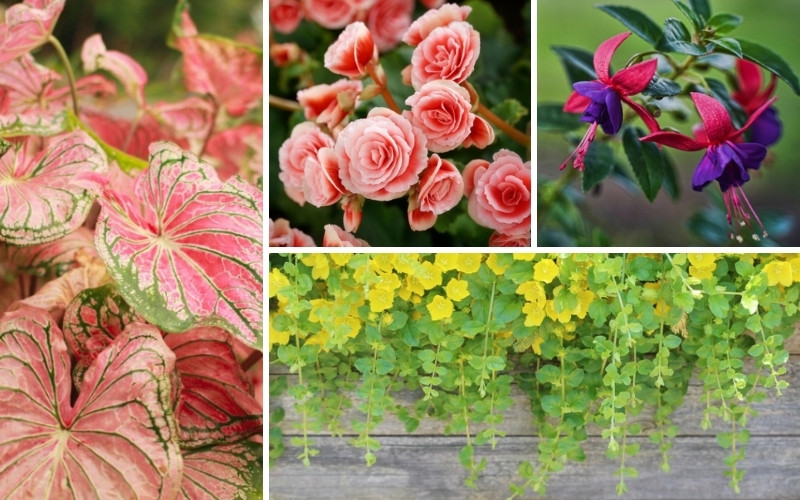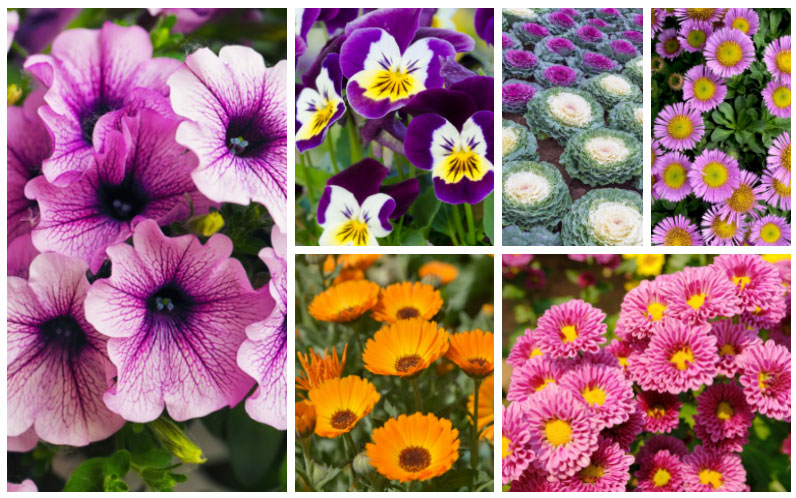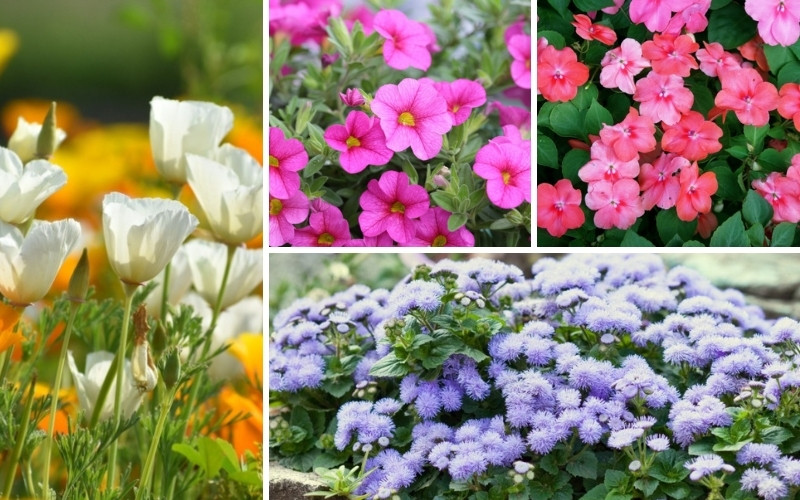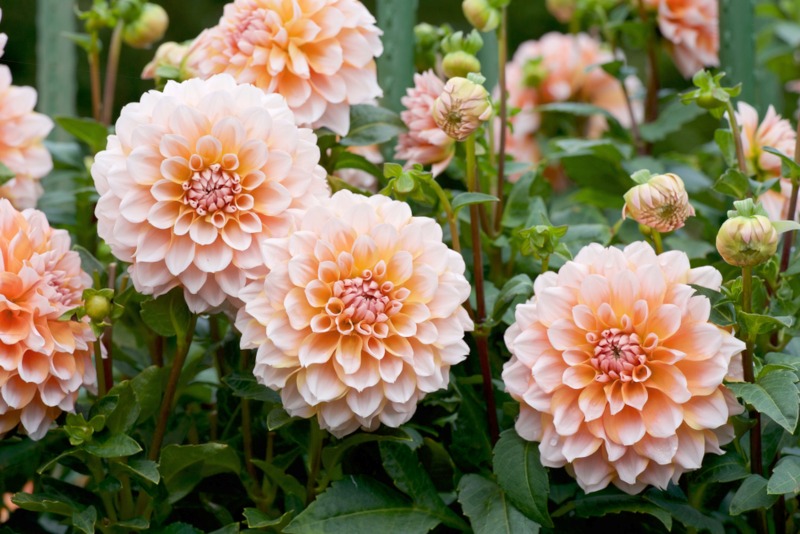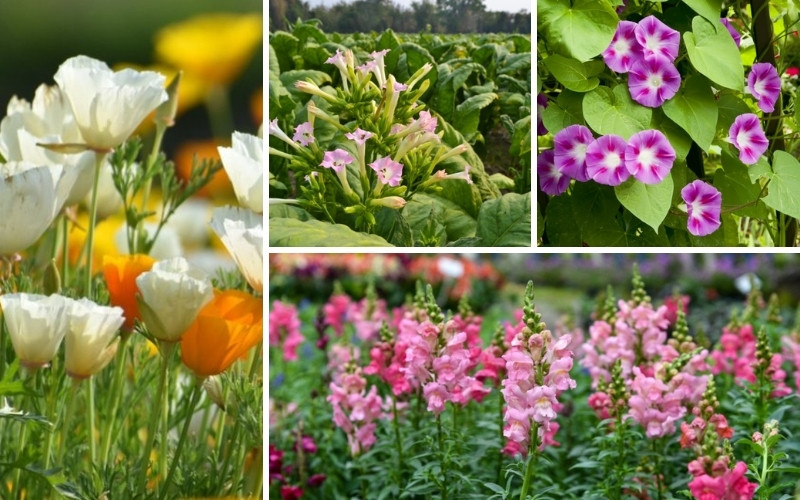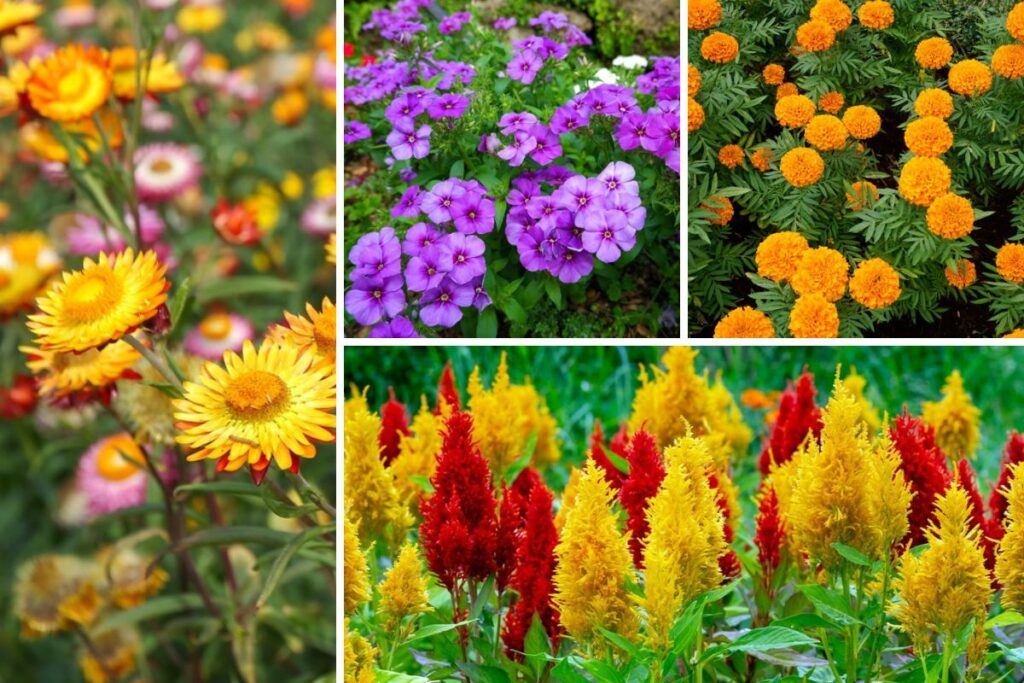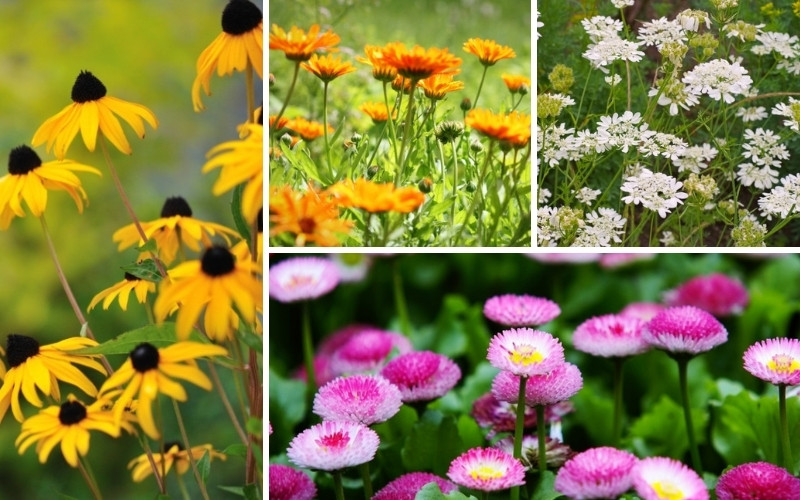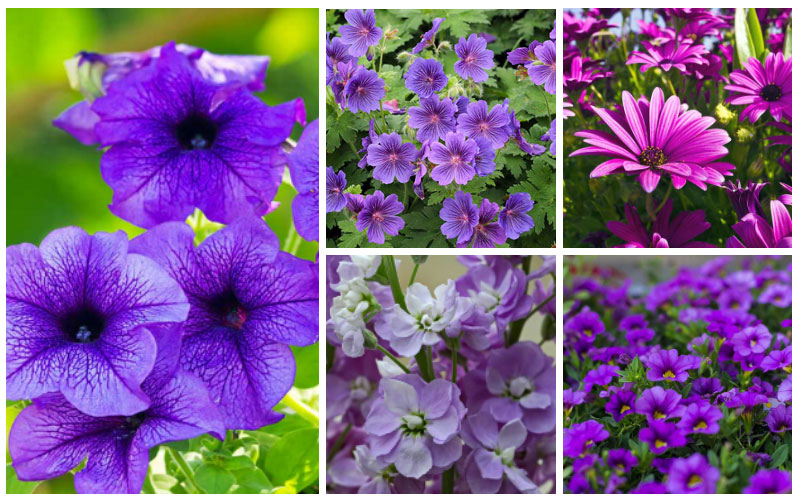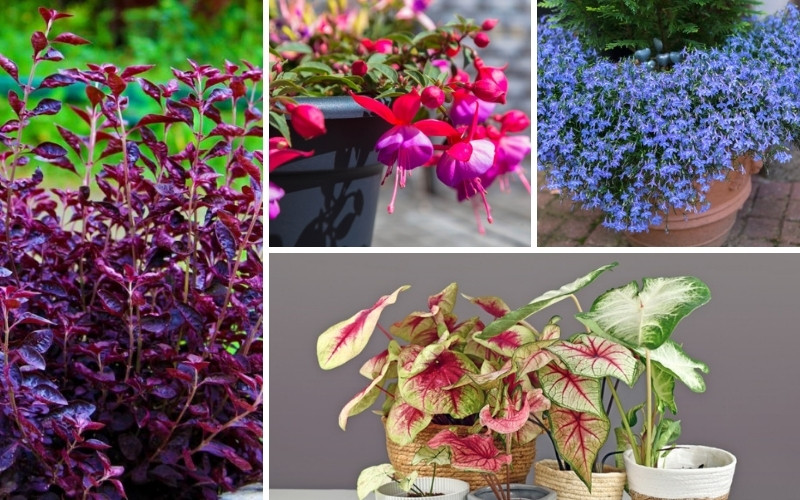
The best flowers or annuals that need partial shade can withstand being shaded for four to six hours per day. While they receive plenty of sun in the morning, they can take on shade beneath a tree or bush for much of the afternoon.
In fact, a bit of shade can help flowers bloom since too much sun can make it too hot, and the petals and leaves are likely to drop from their stems.
Let’s get into it! Here are the top 10 best annuals for morning sun and afternoon shade.
Calico Plant
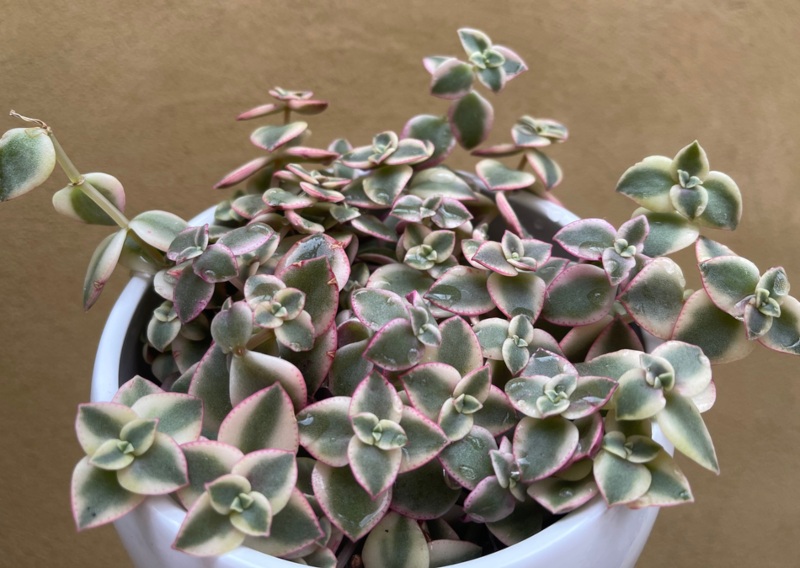
Calico plants have dark leaves. Specifically, the leaves have colors resembling purple plums, and ruby-red jewels—the blooms of a Calico plant range from red to green and have bits of yellow and orange.
Calico plants are about 18 to 24 inches in height and require two to four feet in space to grow correctly. Calico plants need some shade as well as the morning sun. This plant also needs soil with a pH of 7.6 to 6.1. You’ll need to regularly water these plants, but be careful not to overwater them.
Rex Begonia
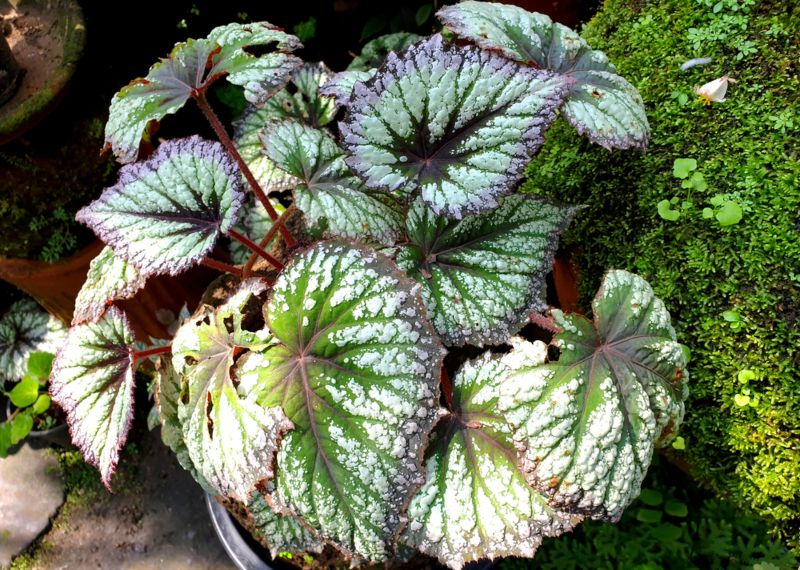
This perennial flower has pink and reddish leaves. Once this plant grows fully, it advances to 12 to 18 inches in height. After being planted, Rex Begonia takes 12 to 14 weeks to grow to its full flowering maturity.
You’ll need porous and light potting soil and bright, indirect light for growing Rex Begonia. Regular watering is essential, but don’t drown the plants. These plants are also perfect for growing at moderate temperatures and humidities.
Wax Begonia
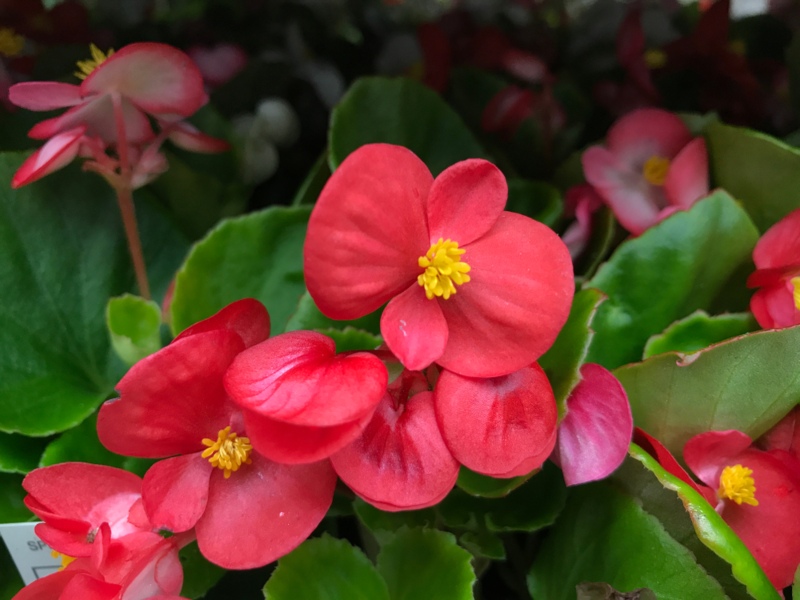
You’ll find that Wax Begonias range in color from yellow, white, and orange to reds and pinks. You can grow these plants outdoors in your garden or flower pots and containers. If you live in a hot place, you’ll want these plants to grow in partial shade. So keep them out in the sun during the morning and shade in the afternoon.
Keep the soil moist and watered, but do not make it excessively wet. Light, well-draining soil along with some fertilizer is vital to growing Wax Begonia. The temperature where you plant Wax Begonia should be around 60 degrees Fahrenheit.
Tuberous Begonia
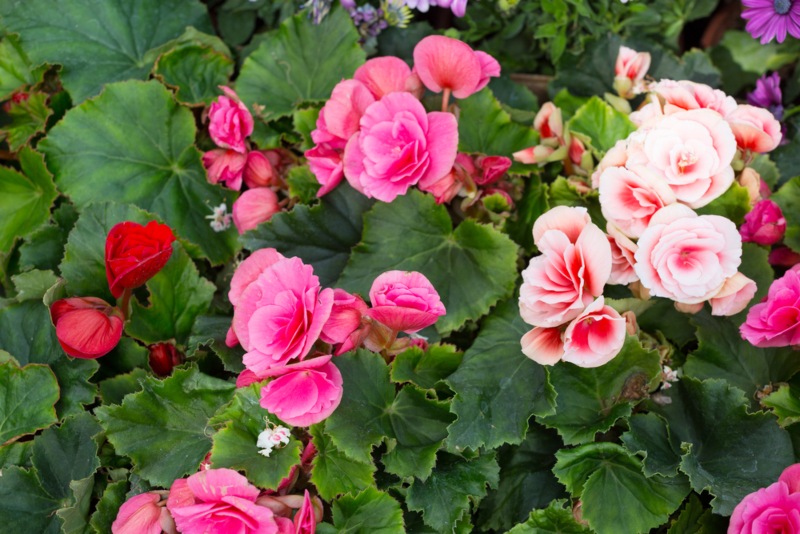
You’ll find that Tuberous Begonia is six to 12 inches in height as well as width. The blooming flower comes in many colors. They grow the best in shady areas with some indirect sunlight.
These plants need temperatures above 50 degrees Fahrenheit, so there is no reason to grow them until the coldest nights are above that temperature. We advise you to first grow your Tuberous Begonia indoors in small containers and then replant them outside in your garden. Water regularly so that the topsoil is moist.
Angel Wing Begonia
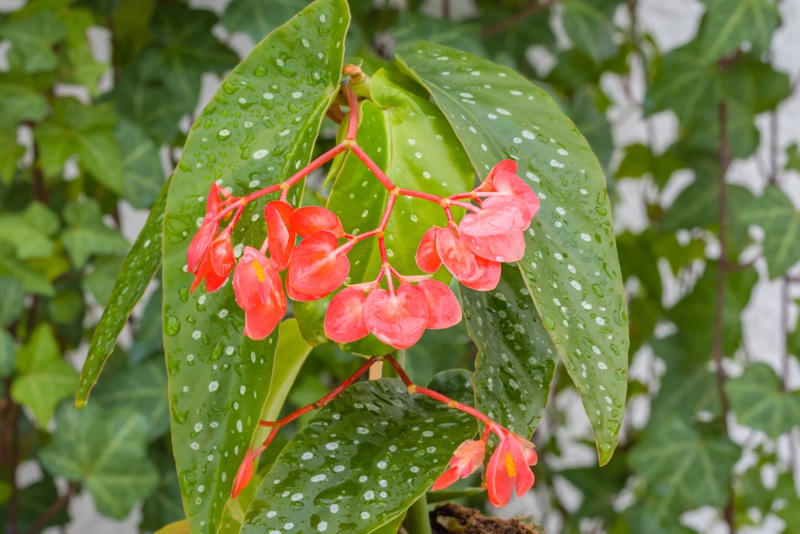
The Angel Wing Begonia plant grows to at least 12 or as much as 30 inches in height and one to two feet in width when using indirect sunlight and partial shading. The flowers on these begonias come in red, white, orange, and pink colors.
You’ll need to keep the soil moist and well-drained. Additionally, the soil pH should be neutral or somewhat acidic. You’ll see these plants bloom in the summer and early fall.
Caladium
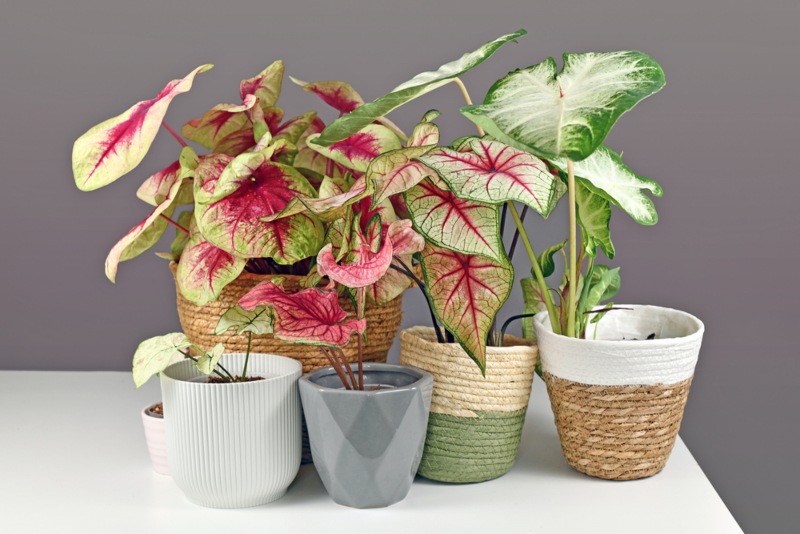
Caladium plants grow 18 to 24 inches in height, and you can even find some dwarf versions below one foot in height. However, these plants are toxic if ingested, so keep them away from children and pets. These plants come in red, green, pink, and white.
You can grow Caladium plants from June until the first day of frost. So choose late Spring as a time to grow your Caladium plants.
These plants need some shade and indirect sunlight. The temperatures need to be warm at around 70 to 85 degrees Fahrenheit. Space the plants 8 to 12 inches apart. Keep the soil moist with a small amount of fertilizer.
Fuchsia
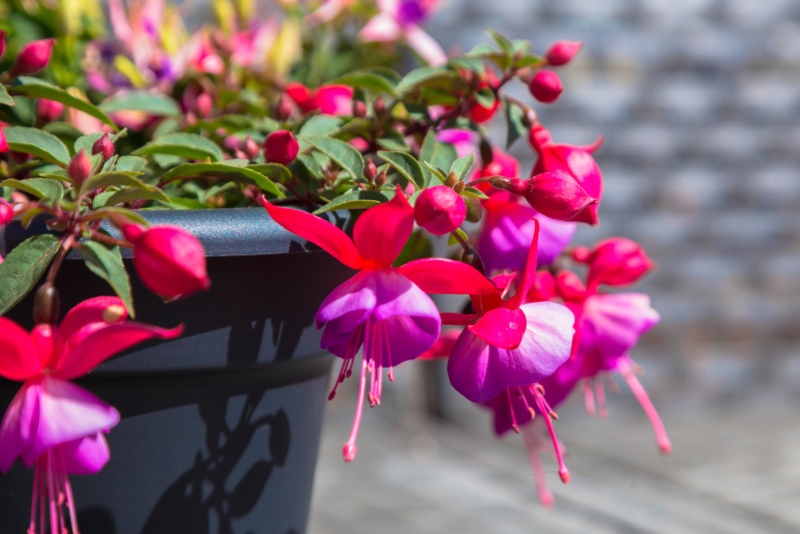
Fuchsia come in various colors such as purples, pinks, orange, white, and red. You’ll need to plant Fuchsia in soil with a pH of 6 or 7.
The plant will need some shade and indirect sunlight in the mornings. If planting indoors, put it in front of a window with bright but indirect light. You’ll need to snip some of the stems and leaves that may die off. During the colder months, water your plant every three to four weeks, but by springtime, leave it with plenty of water and food.
Polka Dot Plant
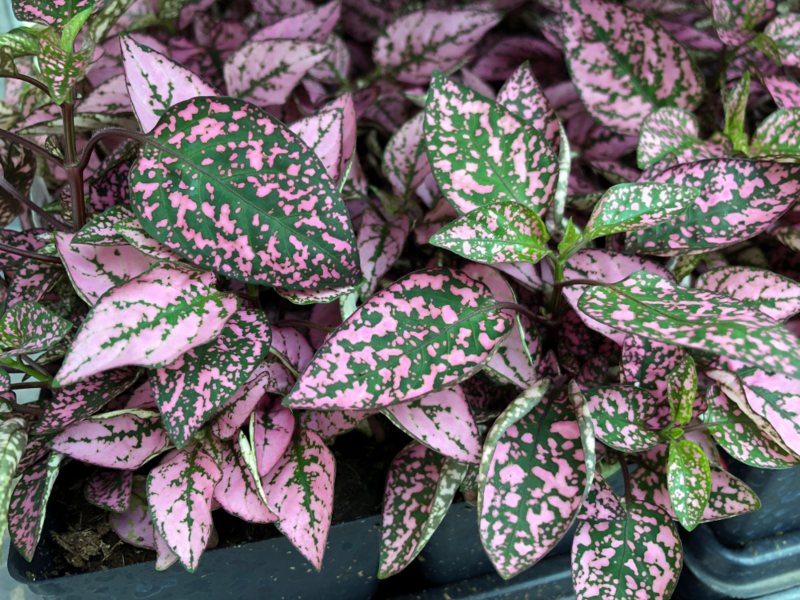
The Polka Dot plant comes in flower colors of lilac or pink. This particular plant grows 30 inches in height and width. To grow this plant, ensure there is plenty of sunlight as well as shade in the afternoon.
Grow your plant at a moderate temperature and high humidity. Make sure the soil is rich and well-draining. Water the plant regularly and keep the soil moist. In addition, add some fertilizer once a month.
Iresine Bloodleaf
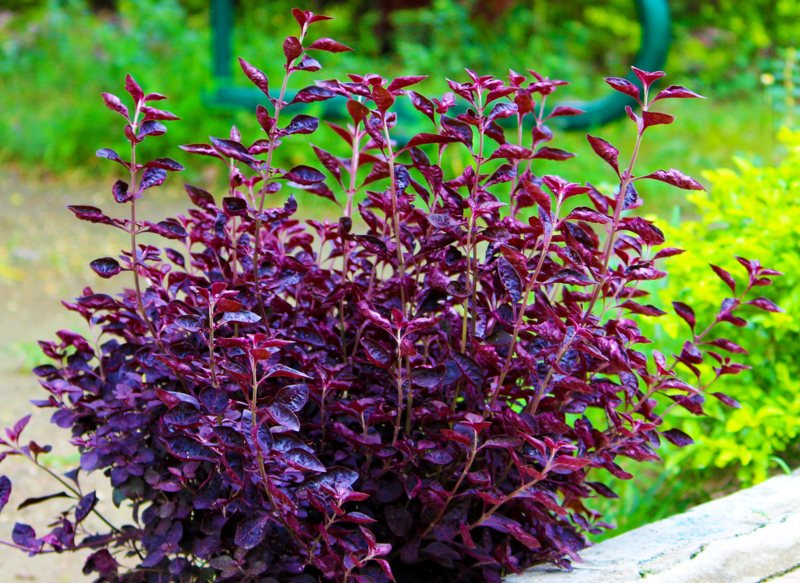
The Iresine Bloodleaf annual is a colorful and bright red plant. You’ll need this plant to grow in bright sunlight and moderate temperatures with some afternoon shade. This plant can grow up to five feet in height and three feet in width. However, they grow only 18 inches in pots.
Water the plant extensively every week so that the soil remains moist. You’ll also want to add at least two inches of organic mulch to the surface.
Lobelia

The Lobelia plant comes in dark blue, white, pink, red, or purple colors. Keep this plant in front of direct sunlight and some afternoon shade. These flowering plants grow from 3 to five inches in height or as tall as three feet in total.
When growing this plant, space it out four to six inches apart. This plant requires frequent watering and a monthly session of fertilizing. Lobelia can be grown in the summer up until the first day of frost.





